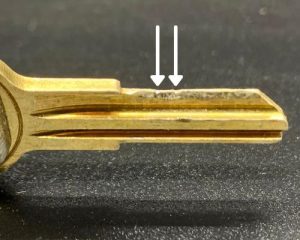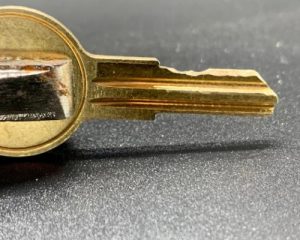how does a locksmith make a key without a key
How do locksmiths make keys when a current key is not available? There’s one technique called “impressioning” that we do. So, whether you’re curious about how it’s done, or maybe you’ve got a utility box that you don’t have a key for, or toolbox, or a straight pad lock and you want to learn how to make a key for it.

Key impressioning
How do locksmiths make keys without the original key being available? There are a number of things that we do, but what we are going to talk about here today is a technique called “impressioning.” It is an advanced technique. It does take a certain skill set.
It takes a certain level of practice.
But, if you’re interested in doing it yourself, you do have a good shot at it, just takes time and work like any other skill
Basic information on key impressioning
So, if you’re looking to get a key made for a lock without a key, here’s one way that we do it. Now, we’re going to be showing you this technique using a Chemlock.
This will work on many different styles of locks.
But, the hardest thing that you’re going to have to do is figure out what key blank the lock takes. When you have a key blank, it’s easy because you’re making a duplicate, so you have the blank in front of you.
When you don’t have the blank, you have to determine what key blank the lock takes.
It’s going to be really, really hard to do on your own, especially because there are thousands of different key blanks.
So, if you’re interested in trying this and playing with it, take that lock into a locksmith and he will get you the right key blank for the lock.
He’ll sell you a couple extra key blanks.
You’re gonna need them if you’re going to try this on your own.
If you want the locksmith just to make the key for you using this technique, typical average pricing in Canada is $40-$50, plus the key blanks, to do an impressioning.
But, if you’re going to try it on your own, you’re going to need the right blanks, so you’re going to need a locksmith for at least that piece.
Here are the basic tools that are required to impression a lock:
- Lock
- Key Blank
- File
- Vice Grip
- Magnifying glass
How does key impressioning work
Once you’ve got the right key blank, the first thing you’re going to want to do is to file that key blank into a sharp point, kind of like a blade.
And we just do that using a pippin file.
When filing, you’re coming off the side. You’re not going right directly on top of the key, because, again, you’re trying to get to a thin point.
We go slowly across it until we reduce it down to a sharp blade like you see here. ↓
Once you have that key filed down, you’re going to get yourself a pair of vice grips. Vice grips work great.
They also make specific tools just for impressioning, but vice grips, mostly everybody has them and they work really well.
You’re going to insert the key into the lock and start twisting the key.
What you’re trying to do is, you want the wafers or the pins in the lock to actually mark that blade you just filed down, so that you can see where you have to make cuts in that key, so that it freely turns.
So, use any technique you can on this. Twist it back and forth. Shake it up and down. Do anything you can to get those marks transferred over to the key.
Here’s the result of the first impressioning on this particular key blank, and I’ve drawn some arrows here to help you see it, because it’s very difficult to see. There’s basically two little marks on that key, and that’s where i’m going to have to file that down.
A lot of tips and tricks here, different technicians do different things.
A lot of our technicians will take a cigarette lighter and hold it below the key before they do the impressioning, so the smoke from the fire transfers to the key. That makes it a little bit easier to see where the impressions in the key are at.
But, that is what you’re shooting for: marking the key so that you can then file it down and get a key that turns.
Identify the pin marks made on the key blank and file them down
Once you have those marks transferred to the key, you’re just going to score it slightly with your file and shave it down just a little bit.
You’re not going to go too far because you’re going to progress this.
Start with little depths, and then put it back into the lock, and take a new set of impressions to see if… Where you need to continue the filing.
In this photo here, we’ve got a close-up shot of his first set of filings.
And this is about as deep as you want to go.
After that, it’s just rinse and repeat.
File down a little bit. Get a new set of markings.
File where the markings are.
The key is turning in the lock. What's next?
And here’s what will eventually happen.
You’ll put the key back into get a new set of markings, and you’ll find that when you’re doing the twisting and turning,
the key will actually twist over. And that’s because you’re so close that the key will actually spin in the cylinder.
And you’re going to look for a new set of markings.
Fine-tune the key just a little bit, and once that key is opening the lock nice and easily, you’ve got the cuts you need to make a fresh key for that lock.
Now, you don’t stop here.
You don’t want to use this key. You don’t want this key to be your main key because you filed it down.
It’s thinner, It’s weaker.
So, what you want to do at this point now that you’ve got that key is take it back to a locksmith, or if you’ve got the tools, do it yourself, but copy that key that you impressioned onto a brand-new key blank so that you’ve got a good, strong key that works your lock.
And that’s it. That’s how we make a key when the current key is not available. So, if you’re going to try this, and try to make your own key, leave us a comment down below. I’d be curious to know how it went for you.


